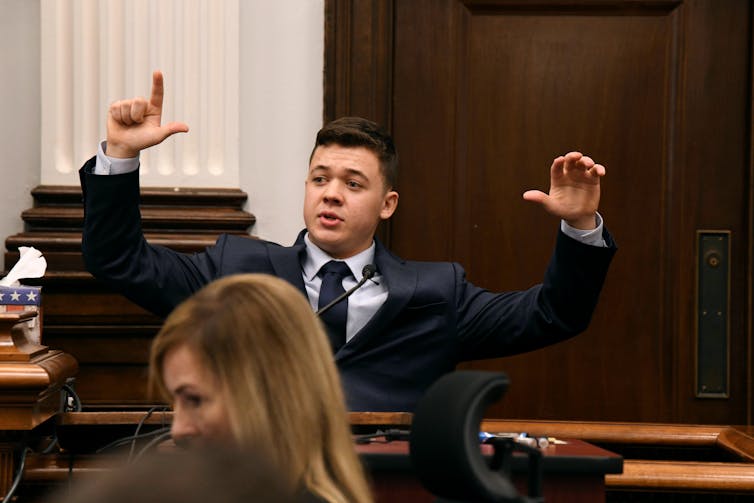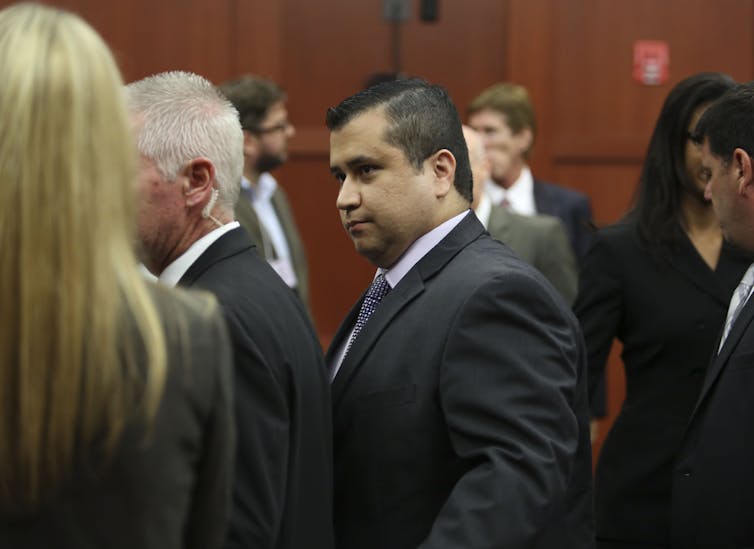In a two-7 days demo that reignited discussion around self-protection legal guidelines throughout the country, a Wisconsin jury acquitted Kyle Rittenhouse for taking pictures three people today, two fatally, throughout a racial justice protest in Kenosha.
The Wisconsin jury considered Rittenhouse’s claims that he feared for his existence and acted in self-defense after he drove about 20 miles from his house in Antioch, Illinois – picking up an AR-15-model semi-automated rifle in Kenosha – in what he claimed was an exertion to defend assets throughout violent protests. The lakeside town of 100,000 was the scene of chaotic demonstrations soon after a white law enforcement officer shot Jacob Blake, an unarmed, 29-yr-outdated black man, leaving him paralyzed from the waistline down.
In providing its verdict, a Wisconsin jury resolved that Rittenhouse’s conduct was justified, even even though the prosecution argued that he provoked the violent face and, thus, ought to not be capable to uncover refuge in the self-defense doctrine.
As prosecutor Thomas Binger claimed in his closing argument: “When the defendant provokes this incident, he loses the proper to self-defense. You are not able to declare self-defense versus a risk you create.”
The Wisconsin jury disagreed, and its determination may possibly portend a related final result in one more superior-profile circumstance in Ga, wherever 3 white guys are on demo for the taking pictures loss of life of Ahmaud Arbery soon after they claimed the Black gentleman was a suspect in a rash of robberies. Like Rittenhouse, the three guys claimed they were being acting in self-protection.
Self-protection arguments are normally raised throughout trials involving decline of life. Juries are then asked to determine no matter if a defendant’s carry out is justified by ideas of self-protection or whether the offender is criminally liable for homicide.
Complicating matters is that every single condition has its individual unique homicide and self-protection regulations. Some states notice the controversial “stand your floor” doctrine, as in Ga – or not, as in Wisconsin – further clouding the public’s comprehending on what constitutes an suitable use of lethal drive.

Image by Mark Hertzberg-Pool/Getty Visuals
5 aspects of self-defense
As a professor of felony legislation, I instruct my pupils that the regulation of self-protection in The us proceeds from an significant strategy: Human life is sacred, and the regulation will justify the having of human lifestyle only in narrowly described conditions.
The legislation of self-protection retains that a individual who is not the aggressor is justified in making use of lethal force against an adversary when he reasonably thinks that he is in imminent danger of death or major bodily damage. This is the normal that each individual condition utilizes to define self-defense.
To establish no matter if this common is fulfilled, the regulation seems at five central ideas.
Initially, the use of force should be proportionate to the power employed by the aggressor. If the aggressor evenly punches the victim in the arm, for instance, the victim simply cannot use deadly force in response. It’s not proportional.
2nd, the use of self-protection is confined to imminent harm. The risk by the aggressor have to be speedy. For occasion, a particular person who is assaulted are unable to leave the scene, prepare revenge later and conduct vigilante justice by killing the preliminary aggressor.
3rd, the person’s assessment of whether or not he is in imminent risk of loss of life or severe bodily personal injury must be reasonable, that means that a intended “reasonable person” would look at the risk to be sufficiently risky to set him in fear of demise or really serious bodily injury. A person’s have subjective see of this anxiety is not ample to satisfy the standard for self-protection.
Fourth, the legislation does not allow a 1st aggressor to profit from a self-protection justification. Only those with “clean hands” can advantage from this justification and prevent criminal liability.
Finally, a human being has a duty to retreat ahead of employing lethal drive, as extended as it can be finished securely. This reaffirms the law’s belief in the sanctity of human existence and makes sure that fatal force is an possibility of last vacation resort.
‘Stand your ground’
The proliferation of states that have adopted “stand your ground” guidelines in latest many years has sophisticated the investigation of self-protection involving the duty to retreat.
Courting back again to early Anglo-American law, the obligation to retreat has been subject to an crucial exception traditionally known as the “castle doctrine”: A individual has no responsibility to retreat in his property. This principle emerged from the 17th-century maxim that a “man’s property is his castle.”
The “castle doctrine” permits the use of lethal pressure in self-defense without having imposing a duty to retreat in the residence. More than time, states started to grow the non-retreat rule to areas outdoors of the house.
“Stand your ground” rules came less than nationwide scrutiny all through the trial of George Zimmerman, who was acquitted in the 2012 taking pictures demise of Trayvon Martin.
In that case, Martin, 17, was walking house just after purchasing Skittles from a nearby convenience retail store. At the time, Zimmerman was a neighborhood watch volunteer who named law enforcement immediately after recognizing Martin. Irrespective of currently being told by the 911 operator to stay in his vehicle until eventually officers arrived, Zimmerman as an alternative confronted Martin.
It remains unclear no matter if a struggle ensued, who was the aggressor and regardless of whether Zimmerman experienced injuries regular with his promises of remaining crushed up by Martin. Zimmerman was the sole survivor Martin, who was unarmed, died from a gunshot wound.

Picture by Gary W. Inexperienced-Pool/Getty Photos
In the Zimmerman scenario, for example, below standard self-protection regulation, the mixture of initial-aggressor limitation and duty to retreat would not have allowed Zimmerman to follow Martin close to and destroy him without the need of currently being liable for murder.
But, in a stand-your-ground point out this sort of as Florida, Zimmerman had a lawful suitable to patrol the community close to Martin’s home. As a outcome, through his trial, all Zimmerman experienced to show was that he was in acceptable panic of loss of life or significant bodily injuries.
In Wisconsin, Rittenhouse was also ready to put in evidence that he was in reasonable fear of loss of life. “I didn’t do anything incorrect,” Rittenhouse testified. “I defended myself.”
The prosecution was unable to verify past a acceptable doubt that Rittenhouse was not reasonably in fear for his security. This signifies a higher bar for the prosecution. They have been not able to surmount it.
[The Conversation’s Politics + Society editors pick need-to-know stories. Sign up for Politics Weekly.]

